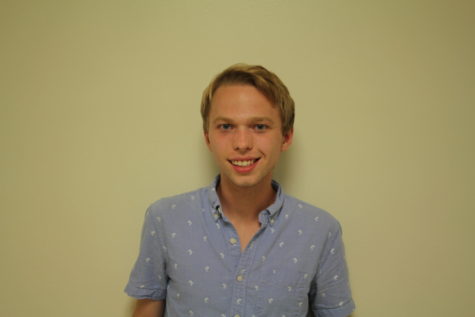Media Mayhem: Podcast Serial grapples with the complexity of justice in America

Serial podcast logo
January 31, 2019
When I heard that the third season of the hit narrative podcast Serial would be a deep-dive into America’s criminal justice system—through the lense of a courthouse in Cleveland—I was very intrigued as to what story they would ultimately tell.
Serial came to prominence in 2014 when it told the story of Adnan Syed, a man who was convicted in 1999 of murdering his girlfriend in Baltimore. But the podcast raised numerous questions about the accuracy of the verdict and sparked a podcast renaissance while it was at it.
Through the creation of a long-form audio storytelling podcast, host Sarah Koenig uses the skills she acquired at the renowned public radio show This American Life—which produces Serial with Chicago public radio station WBEZ—and introduced the world to the medium of podcasting.
The podcast, for the first time, showed the viability of this medium that had, up to that point, not had its time in the spotlight. But additionally, the show also demonstrated the impact podcasting can have on the real world.
A judge threw out Syed’s conviction and ordered a retrial after the podcast highlighted the incompetence of Syed’s initial representation. At this very moment, Syed’s case is still working its way through the very justice system that the newest season of Serial is tackling.
In season one of Serial, the show raised questions about the justice system’s handling of one specific case in particular. While that is important—we can all agree it is best when innocent people are out of prison—Syed, if innocent, would not be the only innocent person to be wrongly thrown into prison.
Additionally, adding further nuanced into this concept of justice, even people who have committed crimes have been, as season three of Serial argues, screwed over by the system themselves.
What that means is, so many of the people who have been thrust into the gears of the justice system have been shoved into this system as a result of larger societal inequities: the color of their skin and their socio-economic position.
In season three, Koenig and her team spent a year in the halls of the Justice Center in Cleveland, OH., to see how the justice system works up close—capturing the stories of the people who’ve allegedly committed the crimes, talking to the lawyers involved in both the defence and prosecution the accused but, most importantly, the show goes personal with the people and communities who are affected by the verdicts in these cases.
As a person involved in the news business, I know the importance of crime to the news industry. It is the bread and butter of the local news. But in our day-to-day coverage, these cases are all treated like isolated incidents.
The story goes like this: A crime occurs. We hear about who committed the crime. We think we could never commit a crime and thus we bask in our superiority. They get convicted and they get separated from society—end of story. But treating crime like that is missing a lot of the factors that lead to crime taking place in the first place.
We don’t think about the cyclical cycle of recidivism. We don’t think about how we live in a society where a simple conviction in one’s past can prevent a person from having any chance of employability, regardless of the state of a person’s reformation.
We don’t think about how, when a person serves their time and leaves prison a seemingly-reformed individual, they still live in poverty after prison. They still live in the same violent communities and with the same people from their past, people who often had a role in their getting convicted in the first place.
We don’t think of the ways prosecutors and overworked public defenders are incentivized to push people into guilty pleas despite a person’s guilt or innocence—pleas that are often taken because prosecutors pile on charge after charge after charge that scare even innocent people into taking a lesser charge out of fear of serving 20 years to life.
We don’t think about how, in these impoverished communities, these offenders often have the choice of getting involved in gangs or become the victim of their actions. The gangs we hear so much about are a source of much-needed protection in these communities, even if they themselves only exacerbate these issues.
At the end of the day, we don’t think about the why. Especially in journalism, we think a lot about the who, what, where and when, but the real reasons why—the deeper societal forces that result in a person picking up a gun and committing crime in the first place—is often lost in the depravity of one’s action.
But it is important to note, Serial is not arguing that those who commit crimes deserve to go free. But what Serial does attempt to do is to provide a deeper look into our definition of justice in America, and who that definition of justice service and who it doesn’t.
Many of the critiques of previous seasons of Serial—especially the intermixing of Koenig’s role as a journalist telling this story and the deeply personal connections and friendships that she often forms with her sources along the way—still have validity in this season. It does seem like Koenig is trying to be fair to all players in the story of the Cleveland Justice Center.
Ultimately, season three of Serial is a much needed counter-perspective in our day-to-day coverage in crime. As their motto goes, it tells the story of this flawed courthouse week by week, but it is not just this flawed courthouse but our flawed courthouses.
Cleveland is just the setting of this story. These issues persist in cities like Chicago or Minneapolis or New York or essentially any metropolitan area.
The people in these courthouses are working hard—often trying to do their best for the people they are coming in contact with—but Serial effectively argues that more needs to be done.
Serial season three forces us to confront our system and take a deep look at its impact on people’s lives—for better or worse. Even if it doesn’t have the solution, it elucidates the aspects of our justice system we may not want to see.



















![Movie poster for '[Rec]" (2007).](https://www.lionnewspaper.com/wp-content/uploads/2023/04/rec-640x900.jpg)


